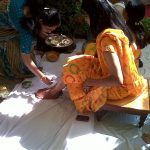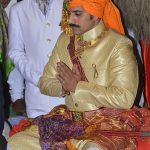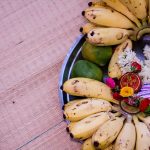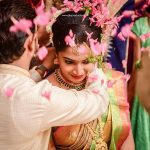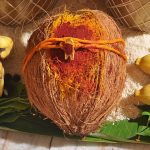Bengali weddings are full of fun, laughter and celebration, and they also incorporate rituals that are unique to Bengal. Most Bengali wedding rituals give deep meaning and significance to the special day when a bride and groom join their lives in marriage. The ornaments worn as part of the ritual and ceremonies in Bengali wedding celebrations are very distinctive. Read on to understand more about the Bengali Hindu wedding rituals and their meaning.
Bengali Wedding Matchmaking
As in most Indian Hindu wedding matches, the friends and relatives of the bride and groom look for a suitable match. They are the Ghotoks or matchmakers, and they introduce the families of the prospective couple to each other. They meet, and if the bride and the groom are willing, the Paaka Katha or final talk is held. The parents of the couple and very close relatives meet. The Bengali wedding rituals list is drawn up, dates fixed, and so the marriage rituals begin.
Bengali Wedding Rituals List
The rituals that are usually a part of the rituals in Bengali wedding celebrations are listed below. Some rituals may be combined on a single day, while others may be eliminated depending on the family customs and preferences.
Pre-Wedding Rituals
- Adan Pradan
- Patri Patra
- Ashirvad
- Aai Budo Bhaat
- Ananda Nadu
- Vridhi
- Dodhi Mangal
- Gaye-Holud
- Holud Kota
- Adhibas Tatva
- Kubi Patta
- Snan
- Sankha Porano
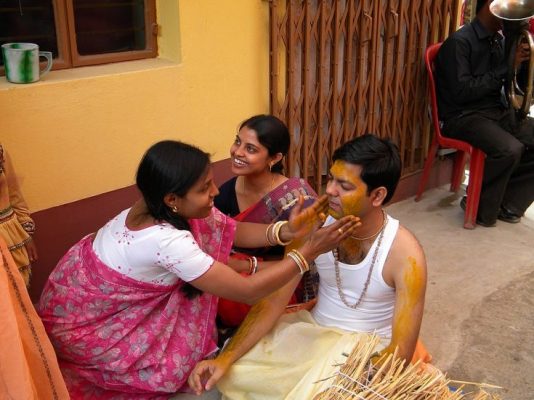
Bengali Wedding Rituals
- Bor Boron
- Potto Bastra
- Saat Paak
- Mala Badal
- Subho Drishti
- Sampradan
- Yagna
- Saat Pak (couple)
- Anjali
- Sindur Daan
- Ghomta
Post-Wedding Rituals
- Bashar Ghar
- Bashi Biye
- Bidaye
- Bou Boron
- Kaal Ratri
- Bou Bhaat
- Phool Sajja
- Dwiragaman
Significant Pre-Wedding Rituals
Ashirbad: The families of the bride and the groom visit each other’s house. They bless the groom and bride by sprinkling husked rice on their heads and gifting them gold ornaments.
Gaye-Holud: This is one of the Bengali wedding rituals for groom that happens at the groom’s house. Five or seven married relatives of the groom grind a turmeric paste and apply it to him. They also send the paste to the bride’s house with a new saree, Gamcha (towel) and gifts. She applies the paste to her forehead.
Dodhi Mongol: This ritual is on the morning of the wedding day. The Dodhi Mongol Bengali wedding rituals for bride involve seven married women who help the bride wear the traditional Shakha and Paula bangles. They feed the bride with a mixture of yoghurt and rice and the bride and the rest of her family fast for the rest of the day. The groom’s family also follows this ritual.
Main Bengali Wedding Rituals
Bor Jatri: The groom gets his mother’s blessings to start a new life as a married man. He leaves for the marriage venue in a vehicle sent by the bride’s family accompanied by two older male relatives called his Borkorta; one from his family and the other from the bride’s family. The youngest male in the groom’s family also accompanies the groom dressed as a groom and serves as the best man or Neet bor. The groom’s family and friends also travel to the bride’s home for the wedding.

Bor Boron: The bride’s mother welcomes the groom and his family with a lamp and sprinkles rice on the groom. The bride’s family serve the groom’s family and friends sweets and drinks.
Potto Bastra: The Bengali wedding ceremony rituals take place on a canopied altar called Chadnatolla where only the groom, bride and priest are seated. The groom is made to sit there and is he is also offered new clothes.
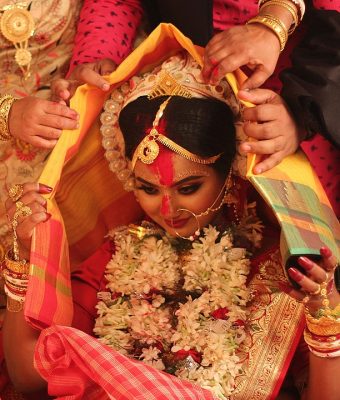
Saat Paak: The bride is seated on a small wooden stool called Piri, covering her face with betel leaves. She is carried by her brothers, who circumambulate the groom in seven circles carrying her.
Subho Dristi: The bride lowers the betel leaves, and the groom and bride look at each other for the first time.
Mala Badal: The bride is still seated on the Piri, and the couple exchanges garlands.
Chadnatolla Rituals
Sampradan: The bride is seated on the Chadnatolla, and a senior male relative of the bride symbolically hands her to the groom. The hands of the bride and the groom are bound by a sacred thread while the priest chants Vedic hymns. The couple places their joined hands on the Mangal Ghot, which is a brass water-filled pitcher covered with mango leaves with a green coconut also placed on it.
Yagna: The priest says hymns before a sacred fire, and the fire god Agni is witness to the marriage.
Saptapadi: The Bengali wedding rituals’ tradition of Saptapadi is very different from the Saat Phere tradition of the rest of the country. The bride steps on seven betel leaves one after the other, and the groom follows. The groom also moves a pestle called Nora with his foot as he steps on the leaves.
Anjali: The bride’s brother places Khoi or puffed rice in her hands, and the bride and groom together pour the puffed rice as an offering into the fire.
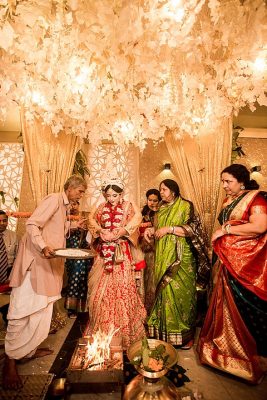
Sindoor Daan: The bride and the groom sit in the Chadnatolla. The bride’s head is covered by a new saree gifted to her by the groom’s family called the Lojja Bostro, and the groom applies sindoor to the bride’s hair-parting as a mark of her being married.
Post-Wedding Rituals
Bidaay: The Bengali wedding traditions after the wedding rituals involve the bride’s family bidding her goodbye and then the groom’s family welcoming her into their family.
Bodhu Boron: The bride steps in a red dye (Alta) solution and takes her first steps into the groom’s home. Her mother-in-law welcomes her.
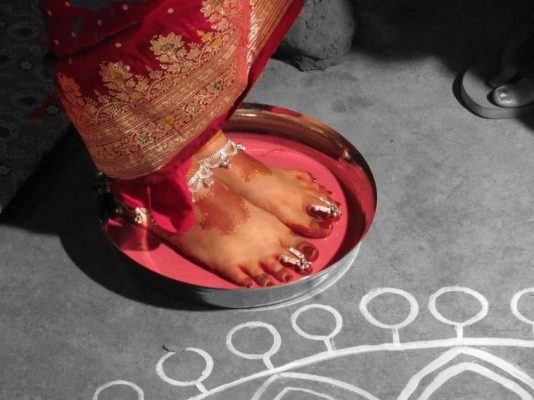
Kaal Ratri: The new couple is separated for the night, and they both rest to prepare for the next day.
Bou Bhaat: The bride cooks and then serves a meal to her new family. The groom also gifts her a saree and vows to take care of her basic needs. The family holds a wedding feast, and the guests give gifts to the bride.
Phool Shojja: The family leaves the couple alone in their room with a decorated bed. Sometimes, friends of the couple prank them by hiding in the room and the groom has to find them and chase them away before he speaks to the bride.
Modern Bengali weddings may also include a grand wedding reception attended by the bride and groom’s friends and family.





